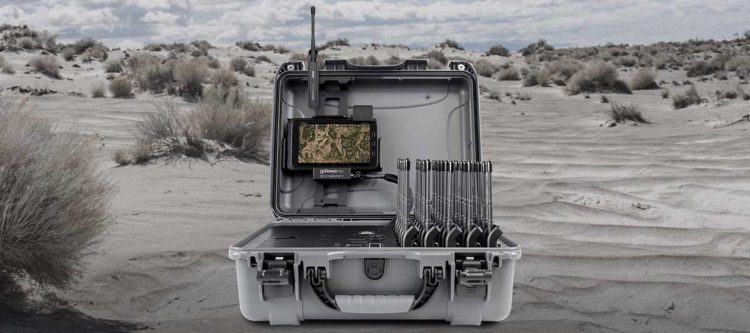Conversations at SOFIC illustrate SOCOM in transition and in need of new solutions

Last month, the senior leaders and decision-makers from the Special Operations Forces (SOF) community came together with industry leaders and solution providers at the 2022 Special Operations Forces Industry Conference (SOFIC).
This annual event is one of the most attended Special Operations-focused events of the year. It is the best opportunity for industry partners to hear senior military leaders discussing the large trends impacting the SOF community, how the needs and requirements of SOF missions are changing and evolving with emerging threats, and the capabilities that Special Forces Operators will need to keep their technological edge on their adversaries.
One of the largest themes that industry partners in attendance at this year’s SOFIC heard was change.
For the last two-plus decades, our SOF community has been focused almost exclusively on foreign internal defense and counterterrorism operations in the U.S. CENTCOM and U.S. AFRICOM areas of responsibility (AOR). They’ve been facing enemy combatants that are not nearly as well equipped and capable as the U.S. military warfighter and tactical operator. They’ve been facing militaries that are not nearly as sophisticated in their weapons systems and platforms as the U.S. Department of Defense.
But that’s all changing.
“In the coming years, China will become the most capable adversary, and they are rapidly modernizing,” said Army Gen. Richard Clarke, commander of the United States Special Operations Command (USSOCOM). “Capabilities to prevail in the Indo-Pacific are our priorities. Every investment we make will support this strategy.”
This increasingly sophisticated enemy in this incredibly challenging AOR means that the SOF community may need to be prepared to conduct operations differently. The adversaries that we’re facing today have proven capable of denying mission-critical communications systems. The logistical challenges that the AOR – and its highly-contested nature – creates could increase the need for SOF operations to do so without sophisticated supply chains to support them.
With so much change facing America’s Special Operations Forces, The Last Mile wanted to get the perspective of someone that was in attendance at SOFIC and is actively working to innovate new technologies designed to overcome these challenges. So, we sat down with Jeff Lee, U.S. Defense and Intelligence Market Manager at goTenna.
The Last Mile (TLM): Jeff, you were in attendance at SOFIC. What were some of the large trends that you heard, as far as the communications requirements and challenges that are facing the Special Operations community?

Jeff Lee: We’re in this very interesting, transitional period for the SOF community right now.
The ongoing invasion of Ukraine and potential aggression from some of our other large adversaries in Asia have them focused on a new AOR. The sophistication of these adversaries has increased the focus on the reliability and security of communications channels.
Comms are mission-critical for Special Operations missions. They need them to communicate as a team. They need them for their increasingly network-enabled systems. And they need them to provide situational awareness back to the senior leaders and decision-makers. But the more sophisticated and advanced threats that they’re facing are going to continue to make that a challenge.
“Should traditional terrestrial or satellite networks be denied, mobile mesh can prevail and provide communications and situational awareness to Special Operations Forces.” – Jeff Lee
TLM: How can mobile mesh networking play a role in enabling comms in these contested environments, where operators are facing adversaries that are capable of denying traditional, terrestrial, and satellite communications networks?
Jeff Lee: Mobile mesh is a resilient addition to the PACE plans for any Special Operations mission. It’s capable of enabling basic communications and situational awareness in any austere environment, even when terrestrial or satellite networks are unavailable or denied.
The nature of mobile mesh makes it a disaggregated network with no single point of failure. Every mobile mesh networking node is capable of serving as a relay, making it redundant and assured. Its ability to transmit location and position data and enable the use of ATAK ensures that every operator on the ground and senior leaders in the Tactical Operations Center always knows where every tactical operator is at any time.
“…[mobile mesh] can provide basic connectivity. Sensors such as beacons can certainly be connected by mobile mesh in austere environments. With the advent of edge computing and much of the computing being done in-theater, the ecosystem of sensors that can be connected via mobile mesh is only increasing.” – Jeff Lee
Should traditional terrestrial or satellite networks be denied, mobile mesh can prevail and provide communications and situational awareness to Special Operations Forces.
TLM: During SOFIC, James Smith, the top acquisition executive at SOCOM, said, “We are going to use a lot of sensors, whether they’re unmanned aerial systems, unmanned ground systems, unmanned maritime systems, unintended sensors, all working together, and what our goal is to have those working together collaboratively and autonomously.” Is that possible in contested AORs with near-peer adversaries? Can mobile mesh play a role in enabling this?
Jeff Lee: It’s possible but not easy. All of those things require connectivity. To get data off of the sensors in real-time, they need to be connected. To get that data to the people that need to access it, they need to be connected. And if basic connectivity is going to be denied or degraded, those solutions are not going to accomplish their mission.
While mobile mesh as it exists today can’t send full-length, HD video intel from a sensor to a warfighter, it can provide basic connectivity. Sensors such as beacons can certainly be connected by mobile mesh in austere environments. With the advent of edge computing and much of the computing being done in-theater, the ecosystem of sensors that can be connected via mobile mesh is only increasing.
TLM: I understand that goTenna recently announced some new solutions during SOFIC. What were these announcements, and how could they benefit the Special Operations community?
Jeff Lee: We recently introduced the newest version of our tactical deployment kit – the goTenna Pro Deployment Kit 2. These kits have everything a team needs to deploy a mobile mesh network quickly and seamlessly in-theater while getting every tactical operator in a team connected and communicating with very little setup time or effort.
“Comms are mission-critical for Special Operations missions…But the more sophisticated and advanced threats that they’re facing are going to continue to make that a challenge.” – Jeff Lee
We’re excited about some of the changes in this new version of the kit. We’ve listened to warfighters and what they’re looking for from an equipment and capability standpoint in-theater and have made changes that we think will make their user experience better.
For example, we’re now including a ruggedized Samsung tablet capable of running ATAK, so the goKit 2 can be used as an off-grid mobile command center at the tactical edge. We’ve introduced Sharable Deployment Packs that provide pre-mission information and configuration to be transferred in a single exchange. This includes secure Wi-Fi exchange of radio configuration, map layers, encryption keys, and more.
And, while this hasn’t been publicly announced yet, we’ll soon be announcing some exciting updates to the goTenna Pro X, which will make the product even better for users in the Special Operations community.
For additional information on mobile mesh networks for military operations, download the whitepaper here.









No Comment